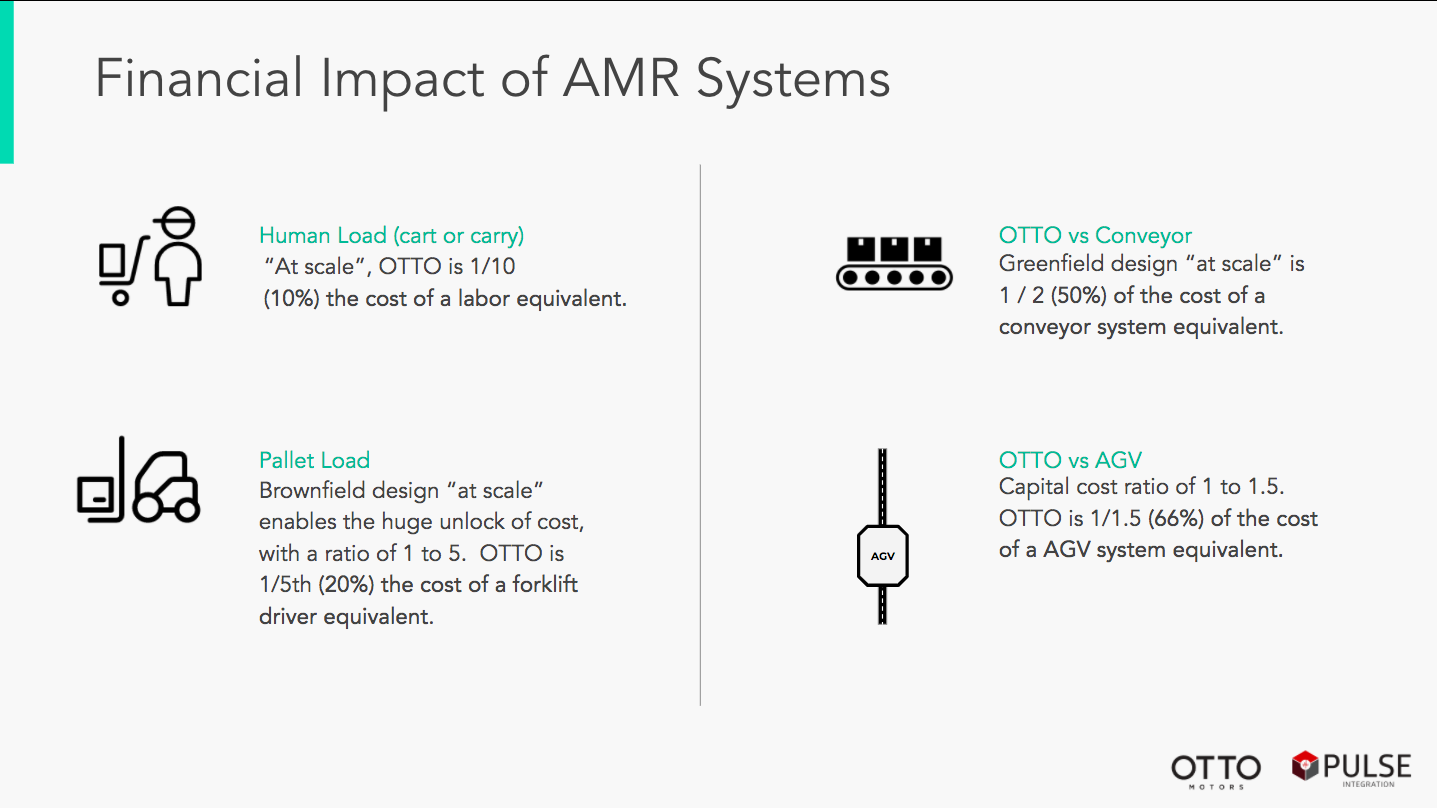This is the third blog in our "The Business Case for AMRs" series. You can read the first blog here.
We set out, in partnership with PULSE Integration (PULSE), to undertake what we believe is the world’s first in-depth analysis of automated mobile robots (AMRs) deployed at scale in industrial facilities.
Working with an F500 company, we deployed the OTTO Materials Handling Platform at a brownfield and greenfield site. PULSE then compared performance with:
- Forklifts
- Conveyors
- AGVs
- Manual material handling
The fact that these deployments were carried out at scale was important. What we have found amongst all but the digital leaders is that businesses look to adopt the technology bit by bit, trying to hedge their bets on their investment risk and keep all stakeholders happy. The result is that you tend to get islands of automation across a business or a production facility, missing out on the network effect you get with a large scale implementation where all pieces complement each other to achieve a greater whole.
Analysis and Conclusion
The findings of PULSE's study were unanimous - on a per-unit basis, they found that:
- AMRs were significantly cheaper compared to other materials handling solutions
- 90% cost saving compared to manual handling
- 33% saving compared to AGVs.
Depending on the investment model used (system lease, vehicle-only lease or capital funding), PULSE calculated that this would translate to ROI being achieved in one to two years.

Source: Webinar - The Business Case for Autonomous Mobile Robots
These are significant figures for an industry that has long tended to view robotics as an expensive solution with a high bar for ROI. As McKinsey puts it, the robotics market, in the past, leaned towards customers with the biggest spending power, focusing on proprietary, non-standardized whole factory solutions that kept costs high - and meant only those firms with the deepest pockets could forge ahead.

Source: McKinsey Global Robotics Survey 2018
PULSE's study is proof that times have changed. AMRs offer a specialized automated solution for one critical area of manufacturing operations, materials handling and intralogistics. PULSE and OTTO have demonstrated how AMRs can boost agility, efficiency, productivity and space utilization in the factory, while also driving down costs.
Critically, AMRs do this in a way that is more cost-effective than other available solutions, with an ROI that fits well within standard financial reporting cycles. If, as the likes of Interact Analysis forecasts, this leads to significant growth in the mobile robotics sector, this will also help to close manufacturing’s digital divide.
THE BUSINESS CASE FOR AMRS IN MANUFACTURING
Uncover deployment considerations, use cases, and payback drivers of AMR systems.